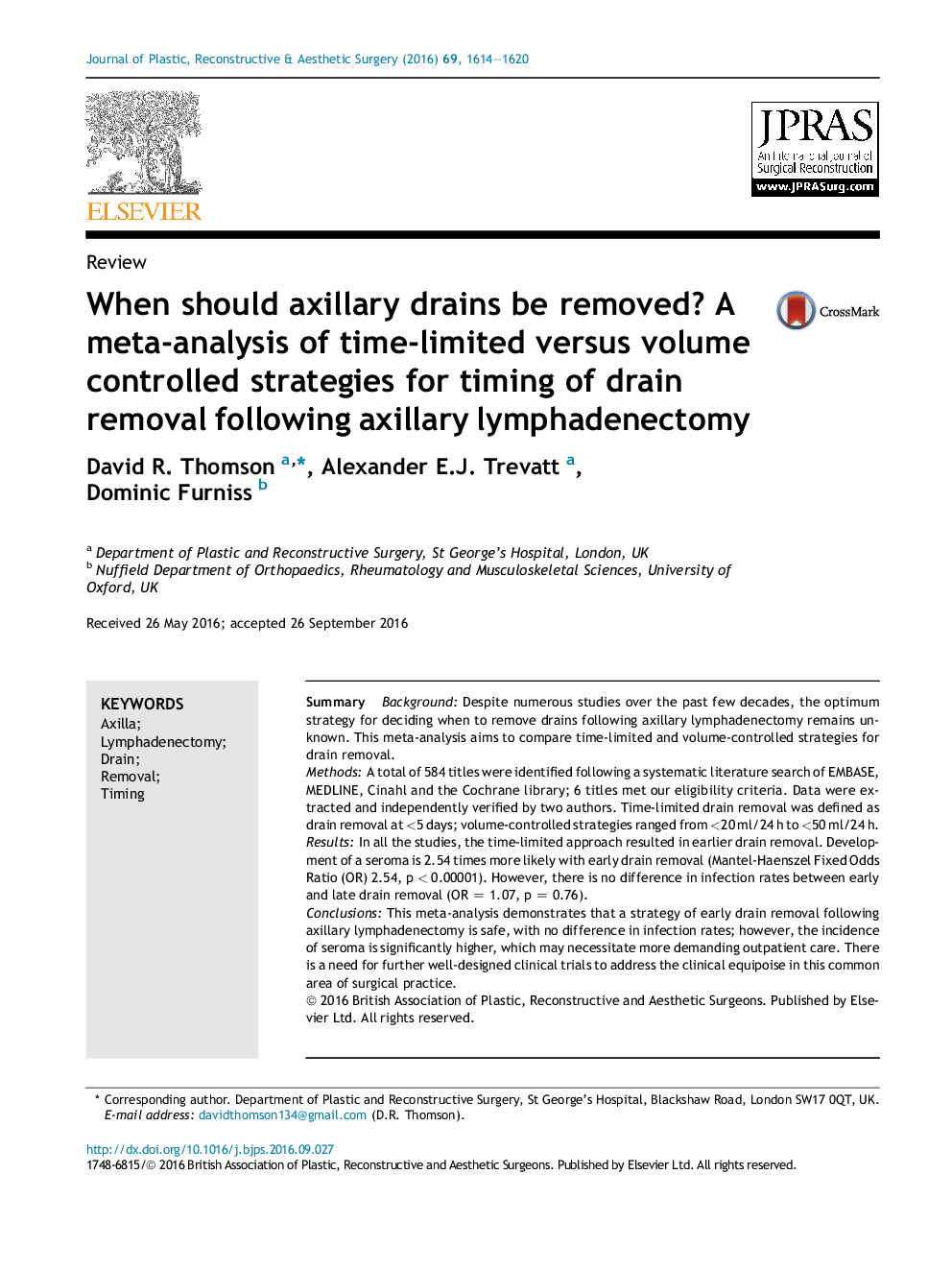| Article ID | Journal | Published Year | Pages | File Type |
|---|---|---|---|---|
| 5715440 | Journal of Plastic, Reconstructive & Aesthetic Surgery | 2016 | 7 Pages |
SummaryBackgroundDespite numerous studies over the past few decades, the optimum strategy for deciding when to remove drains following axillary lymphadenectomy remains unknown. This meta-analysis aims to compare time-limited and volume-controlled strategies for drain removal.MethodsA total of 584 titles were identified following a systematic literature search of EMBASE, MEDLINE, Cinahl and the Cochrane library; 6 titles met our eligibility criteria. Data were extracted and independently verified by two authors. Time-limited drain removal was defined as drain removal at <5 days; volume-controlled strategies ranged from <20 ml/24 h to <50 ml/24 h.ResultsIn all the studies, the time-limited approach resulted in earlier drain removal. Development of a seroma is 2.54 times more likely with early drain removal (Mantel-Haenszel Fixed Odds Ratio (OR) 2.54, p < 0.00001). However, there is no difference in infection rates between early and late drain removal (OR = 1.07, p = 0.76).ConclusionsThis meta-analysis demonstrates that a strategy of early drain removal following axillary lymphadenectomy is safe, with no difference in infection rates; however, the incidence of seroma is significantly higher, which may necessitate more demanding outpatient care. There is a need for further well-designed clinical trials to address the clinical equipoise in this common area of surgical practice.
